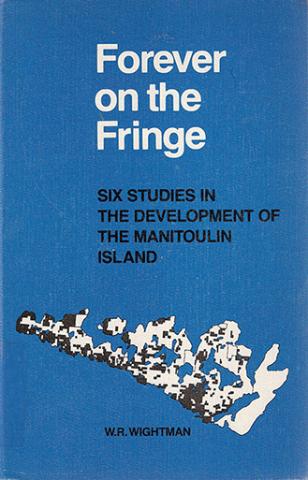
It's amazing what you can find on the internet. When I was first looking for resources to help me understand what life on Manitoulin Island would have been like in the 1860s and 1870s, I wouldn't have imagined that one of the most valuable would come in the form of a geology textbook published by University of Toronto Press in 1982.
Forever on the Fringe: Six Studies in the Development of the Manitoulin Island was a bit of a revelation. Written by University of Western Ontario (now Western University) professor W. R. Wightman, the book details the findings of a research project the author undertook in the mid-1970s to better understand Manitoulin Island's place in Ontario's history. The book takes the form of six essays, each of which shed light on a significant era that helped to shape the island into what it is today.
The first three chapters and their accompanying maps, illustrations and photos were of the greatest interest to me. Collectively they cover a time period spanning from the ancient past all the way up to 1880. They explore the geologic and geographic history of the island, the history of its indigenous inhabitants prior to confederation and the challenging relationship they had with European settlers who set their sights on occupying and developing the island in the 19th century. Wightman places Manitoulin within the context of the cultural, political and economic realities that helped to drive development and inevitably impacted the people and the landscapes.
Forever on the Fringe relies heavily on documentary evidence to tell its story: archival records, newspaper articles, legislation, treaties, land assessments, surveys, you name it. If it made it on to paper, it's fair game. What's missing are personal narratives, indigenous perspectives and oral histories, but when you consider that this is ultimately meant to be a book on geography and geology, there is quite a bit in here that extends much deeper into the human experience than I would have expected. And that was a nice surprise.